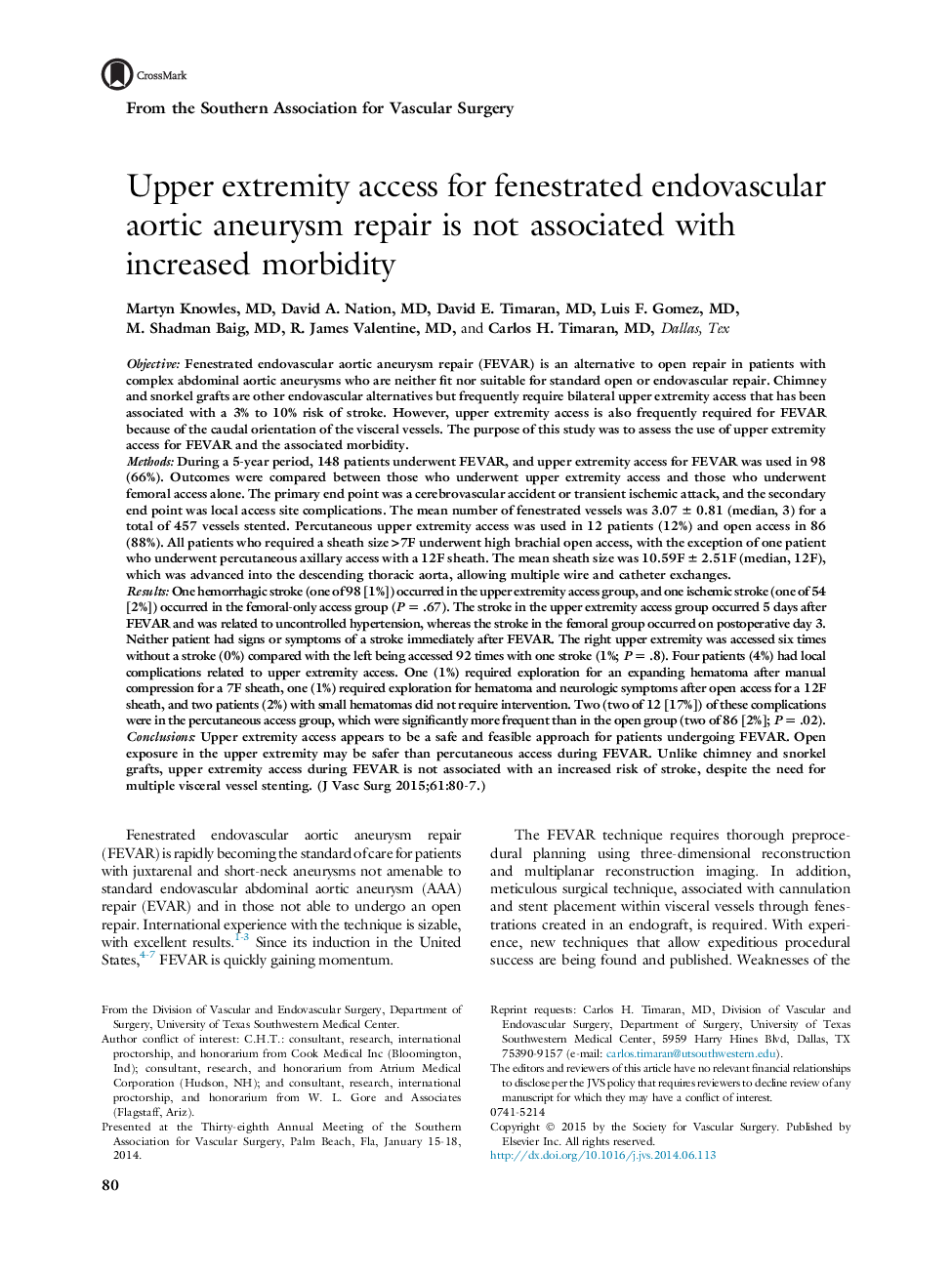| Article ID | Journal | Published Year | Pages | File Type |
|---|---|---|---|---|
| 2988100 | Journal of Vascular Surgery | 2015 | 8 Pages |
ObjectiveFenestrated endovascular aortic aneurysm repair (FEVAR) is an alternative to open repair in patients with complex abdominal aortic aneurysms who are neither fit nor suitable for standard open or endovascular repair. Chimney and snorkel grafts are other endovascular alternatives but frequently require bilateral upper extremity access that has been associated with a 3% to 10% risk of stroke. However, upper extremity access is also frequently required for FEVAR because of the caudal orientation of the visceral vessels. The purpose of this study was to assess the use of upper extremity access for FEVAR and the associated morbidity.MethodsDuring a 5-year period, 148 patients underwent FEVAR, and upper extremity access for FEVAR was used in 98 (66%). Outcomes were compared between those who underwent upper extremity access and those who underwent femoral access alone. The primary end point was a cerebrovascular accident or transient ischemic attack, and the secondary end point was local access site complications. The mean number of fenestrated vessels was 3.07 ± 0.81 (median, 3) for a total of 457 vessels stented. Percutaneous upper extremity access was used in 12 patients (12%) and open access in 86 (88%). All patients who required a sheath size >7F underwent high brachial open access, with the exception of one patient who underwent percutaneous axillary access with a 12F sheath. The mean sheath size was 10.59F ± 2.51F (median, 12F), which was advanced into the descending thoracic aorta, allowing multiple wire and catheter exchanges.ResultsOne hemorrhagic stroke (one of 98 [1%]) occurred in the upper extremity access group, and one ischemic stroke (one of 54 [2%]) occurred in the femoral-only access group (P = .67). The stroke in the upper extremity access group occurred 5 days after FEVAR and was related to uncontrolled hypertension, whereas the stroke in the femoral group occurred on postoperative day 3. Neither patient had signs or symptoms of a stroke immediately after FEVAR. The right upper extremity was accessed six times without a stroke (0%) compared with the left being accessed 92 times with one stroke (1%; P = .8). Four patients (4%) had local complications related to upper extremity access. One (1%) required exploration for an expanding hematoma after manual compression for a 7F sheath, one (1%) required exploration for hematoma and neurologic symptoms after open access for a 12F sheath, and two patients (2%) with small hematomas did not require intervention. Two (two of 12 [17%]) of these complications were in the percutaneous access group, which were significantly more frequent than in the open group (two of 86 [2%]; P = .02).ConclusionsUpper extremity access appears to be a safe and feasible approach for patients undergoing FEVAR. Open exposure in the upper extremity may be safer than percutaneous access during FEVAR. Unlike chimney and snorkel grafts, upper extremity access during FEVAR is not associated with an increased risk of stroke, despite the need for multiple visceral vessel stenting.
